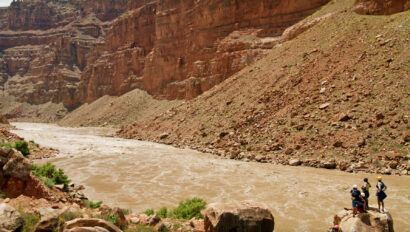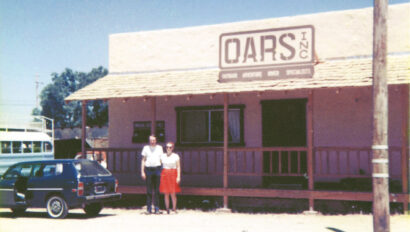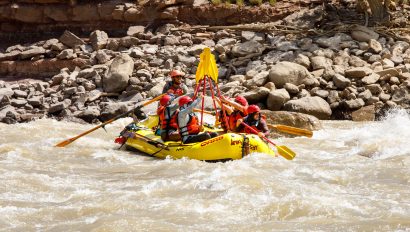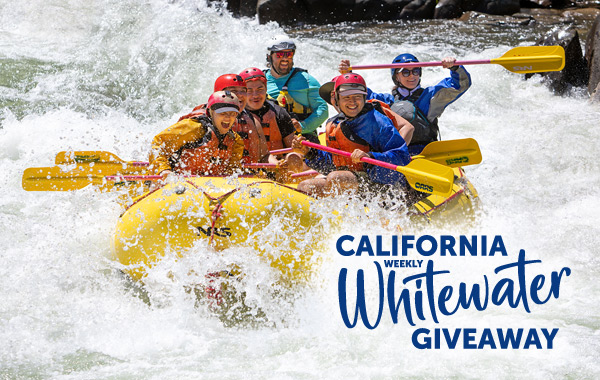Meet One of the First Female River Guides

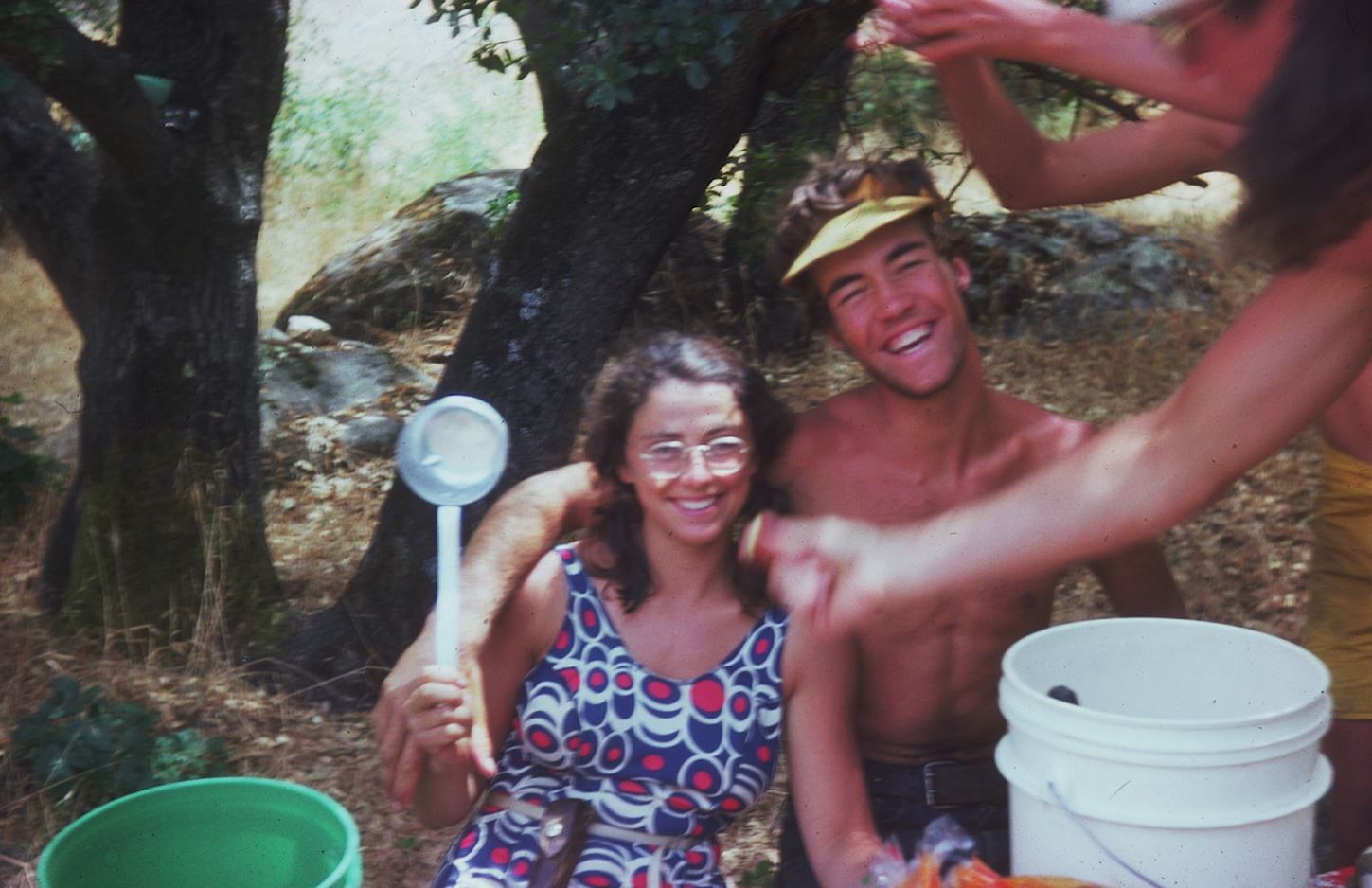
Liz Hymans, an OARS original, reflects back on the early days of the rafting industry and what it was like to be among the first wave of female river guides
In the early 70’s, Liz Hymans got the chance to tag along with a friend on a Cataract Canyon rafting trip. The rest was history, literally.
She inquired with her boatman on that trip about how to get started as a guide. “He said, ‘Well, you have to know somebody.’” But she didn’t know anybody so he recommended that she go to Lees Ferry and get on as a swamper on a Grand Canyon rafting trip instead.
Liz admits she didn’t know what a swamper was, but she headed to Lees Ferry anyway, determined to get noticed. At first, she was able to get a spot on a few motor trips, but the rafting outfitters turned her down left and right. It wasn’t until later that summer when she ran into a friend of hers who was guiding for OARS that she’d get her chance to row.
“OARS came down and I knew one of the guides,” she recalls. “The boss George [Wendt] was there, which was unusual, so I really wanted to make an impression.”
“I helped them pack their food and George remembers me shouldering him aside to get the work done,” she says.
Afterward, she asked him if he had any opening for trainees. “He said that he might have an opening on a training trip in California, but that he didn’t want to have me come all the way up because he couldn’t offer me a job,” she continues. “I said politely, ‘If I got trained, I could try anywhere for a job.’”
George told her to call him. “Four phone calls later, he finally said yes,” she says. He was the first one to give her a shot.
Liz headed to Angels Camp, California, where OARS was starting to take root. She started off driving the shuttle for trips on the nearby Stanislaus River, but quickly worked her way onto a boat and began rowing. That was the start of a 20-year career in the rafting industry.
As part of our 50th Anniversary in 2009, we sat down with Liz to talk about the early days of OARS and what it was like to be one of the first women of whitewater…
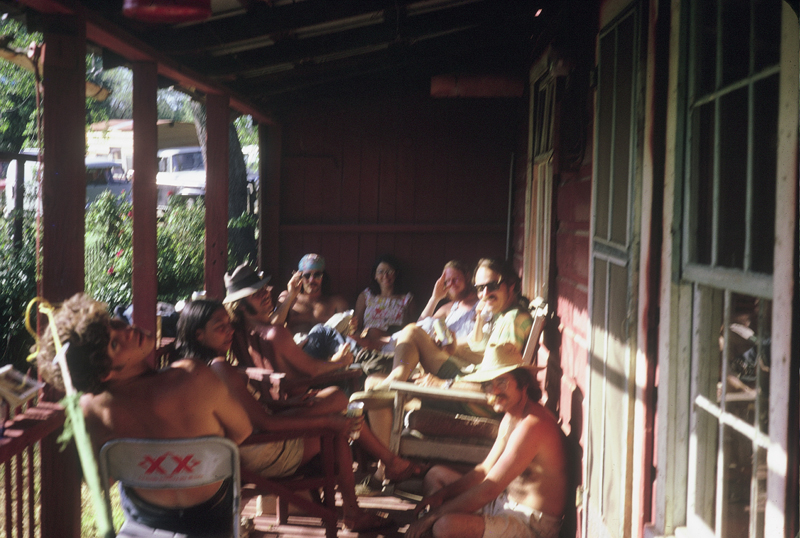
Were there other women guiding when you started out?
Georgie [White] started it, Martha [Clark] ran a few motor trips for one of the motor companies. Then, Louise Teal and I started around the same time. She wrote a book called, Breaking into the Current, about women river guides in Grand Canyon. We never figured out which of us went first, and I’m not sure we care.
How were you treated by male guides during those early years?
There was a whole range of responses from the men in the community. At first, they were not really welcoming. I knew I was not going to get in on the buddy system, so I figured, ‘Well, the harder I work, the less they do.’ Whatever it took, I just wanted the job.
As one of the first female river guides, what other kind of challenges did you face at the time?
The guys liked to build up a mystique about how running the rapids was a big deal and they were heroes who could save people. They deliberately chose bad angles, and they would pull like a mother and everybody would go, ‘Oh wow, we would never have survived that without you. Gosh, you’re so strong and wonderful.’ I couldn’t roll like that. I didn’t have that kind of bulk and muscle, so I had to read the river and figure out what to do. Basically, you get to a certain point, pivot the boat, take a few strokes, straighten it up and ride it out. It’s a piece of cake. Anybody could do that, so I had to row like that.
One guy had something called the “Rough Tough River Boatman” award. After you finished your Grand Canyon training trip there was this bit of a song and dance and you were delivered this certificate. That disappeared after I finished my training. It just quietly went away. I was the spoiler on it, which I’m okay with.
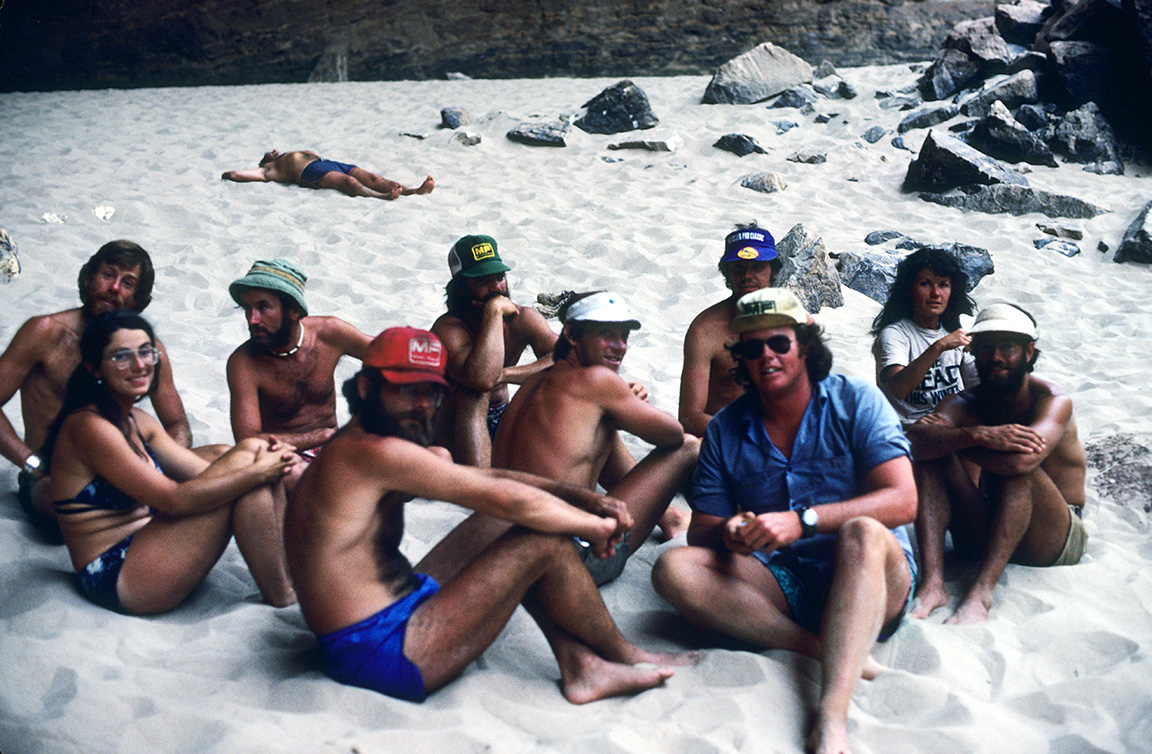
Did it get better?
It did, yes. Over the years more and more women showed up. It was nice. I mean, I love men, they’re great, but at a certain point there can just be too many of them.
What was it like to witness the growth and development of OARS through the years?
I was George’s administrative assistant for a while. When I first came into the office he was still personally telling each passenger what route to drive, where to camp, where to eat, [etc]. So at that point, I came up with equipment lists and information sheets for all the rivers so that when a passenger signed up they got all this information and George didn’t have to tell all these people personally.
He was booking all the reservations into a spiral bound notebook. There would be up to 150 people booked on one page and information willy-nilly everywhere. You would have to read the whole page to know what was going on. He kept those notebooks year after year and he would go back to them sometimes for reference. Bit by bit they got more organized.
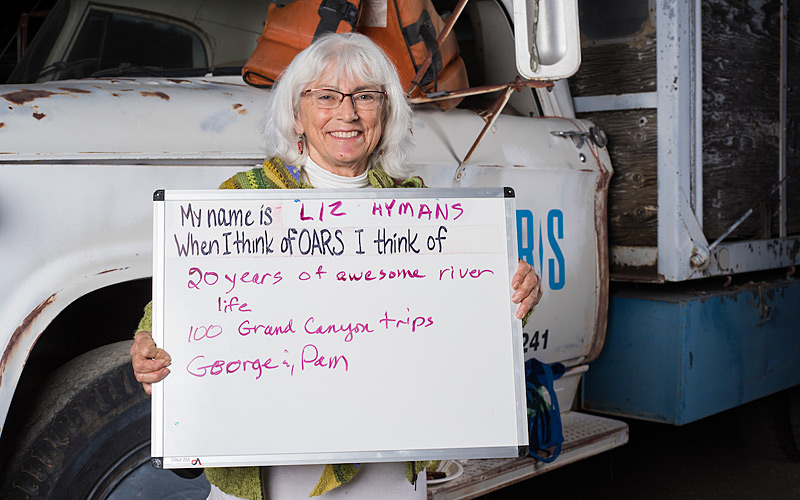
Can you think of a moment that makes you proud to have worked for OARS?
Just the whole experience. George had a knack for finding really good people and hiring them. His ethics were outstanding. He was interested in conservation. He was a sharp businessman. He might have made a few mistakes, but he mostly did well with his business. George was always about quality. The food was quality. The equipment worked its way up to quality (it had a lot of room to improve when we first started). But from the first minute I thought OARS was a really top-notch company, and I don’t think my opinion has changed.
What advice would you give to young women trying to make their way into guiding today?
My path is not necessarily of any use to anyone else. I could give people the stepping stones. I could tell them where to put them, and how to stand on them, and it wouldn’t work for them. They’ve got to go their own way. Go for what you want. Go for your dreams.
This interview was part of a series of conversations we documented for our 50th Anniversary and has been edited for clarity.
Watch the commemorative film: 50 Years
Related Posts
Sign up for Our Newsletter

